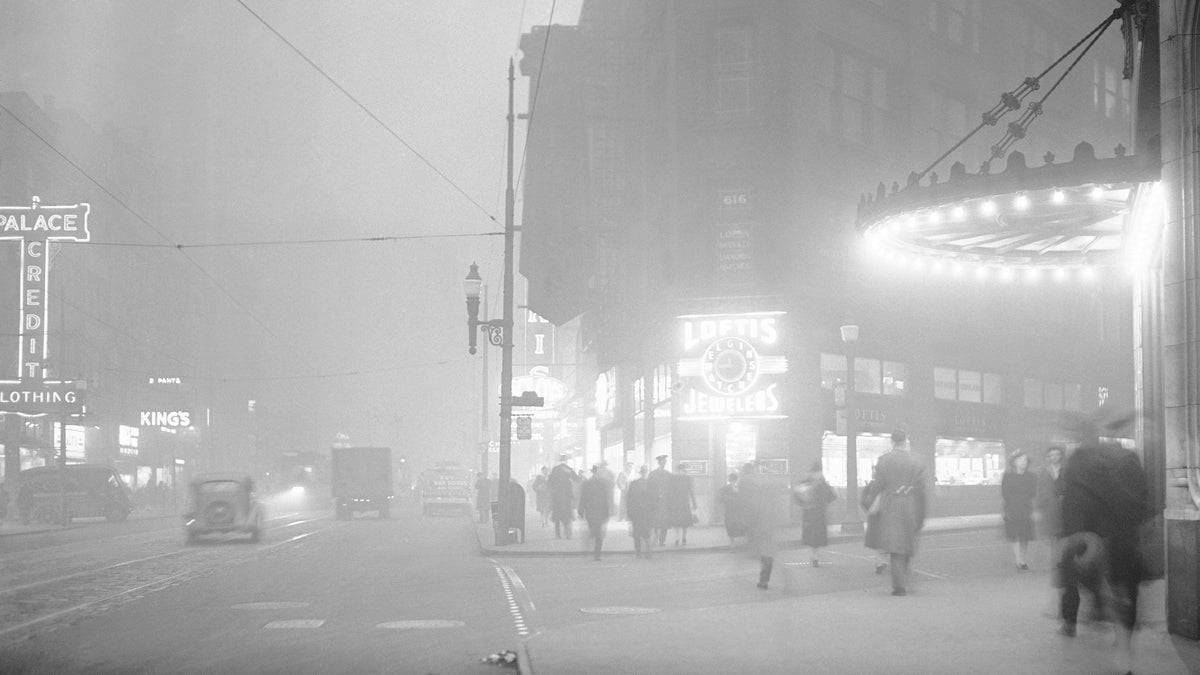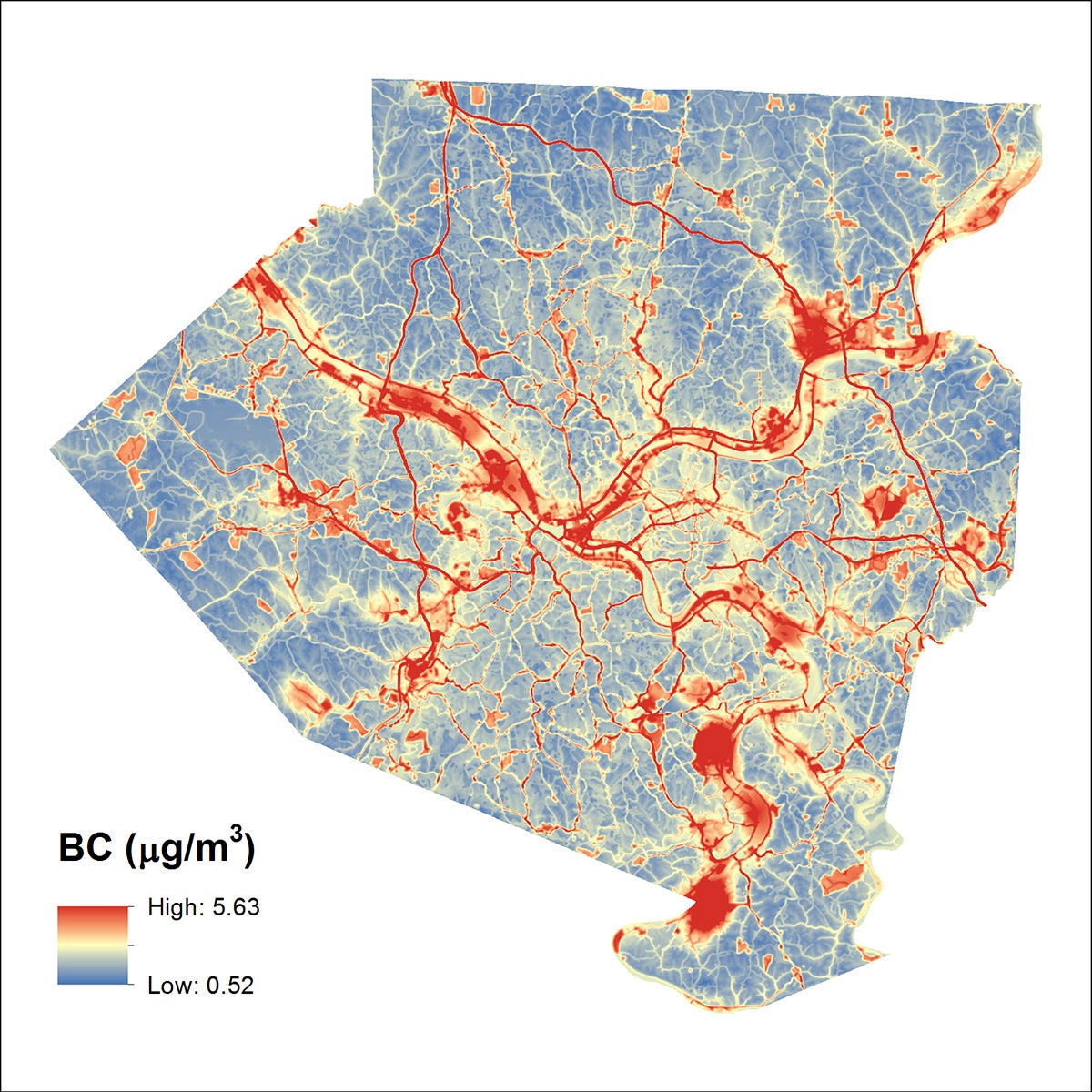Pennsylvania cities still have some of the most polluted air

In this archival photograph from 1944, the clock at right center shows a quarter to noon, but in downtown Pittsburgh, Pa., residents walked in artificially lighted streets when one of the heaviest smogs in the city's history blanketed the town. Today, only two Pa. cities have air quality that is average or above average compared to other U.S. cities.(AP File Photo/Walter Stein)
Only two Pa. cities have air quality that is average or above average compared to other U.S. cities.
Pennsylvania has a dirty air problem. Still.
Take Pittsburgh. In the 1900s, before the major environmental laws started the process of nationwide water and air cleanup, it was sometimes hard to tell night from day in Pittsburgh. Photographs show lit up storefronts beaming through what seemed like a settling dusk, though the pictures were taken in the middle of the day. Air quality in the Steel City has improved, to be sure, but the city still has some of the worst air in the U.S.
The Breathe Project, in Pittsburgh, has put together Environmental Protection Agency data on particle pollution that lets you easily compare Pittsburgh to other cities throughout the U.S. The cities get ranked by what percentage of other towns are as polluted or worse. Pittsburgh is in the dirtiest 13 percent of all cities. Here’s how other Pa. cities compare:
| City | Percentile rank (with 100% being cleanest, 0% being dirtiest) |
| Philadelphia | 29% |
| Pittsburgh | 13% |
| Allentown-Bethlehem | 25% |
| Erie | 4% |
| Reading | 11% |
| Scranton-Wilkes-Barre | 50% |
| Lancaster | 3% |
| Harrisburg | 5% |
| Altoona | 4% |
| York | 7% |
| State College | 43% |
| Johnstown | 2% |
| Gettysburg | 8% |
| East Stroudsburg | 75% |
*All numbers from the Breathe Meter.
Only two of Pa.’s largest cities have air that is of average quality or better than average, Scranton-Wilkes-Barre (50 percent) and East Stroudsburg (75 percent). For some context, notoriously smoggy Los Angeles (7 percent) and Houston (8 percent) are bad, too. But New York (41 percent), Chicago (17 percent) and Boston (74 percent), all bigger than Pittsburgh, have cleaner air.
Some new data by a Carnegie Mellon University Professor, Albert Presto, maps where the dirtiest air is around Allegheny County.

The rivers appear as cautionary red ribbons on the map, with the worst air quality, and hotspots of pollution bleed out around industrial facilities like the Clairton Coke Works and the Shenango Coke Works. The map shows that the region’s many industrial sites are big contributors to the problem. There have also been issues with facilities repeatedly violating local clean air regulations and criticisms that the state is not doing enough to curb pollution.
Why is this a problem for Pa. cities? For one, air pollution has known adverse effects on public health, causing cardiovascular and respiratory issues. But also, as cities work to attract newcomers and retain productive populations, places like Johnstown have been touting their rivers and the quality of life one could lead in a small Pa. city nestled in a beautiful river valley and enveloped by mountains. Only two percent of U.S. cities have air quality worse than Johnstown’s. So someone looking for a new home may choose to settle in an another verdant town where they can breathe a bit easier.
WHYY is your source for fact-based, in-depth journalism and information. As a nonprofit organization, we rely on financial support from readers like you. Please give today.


